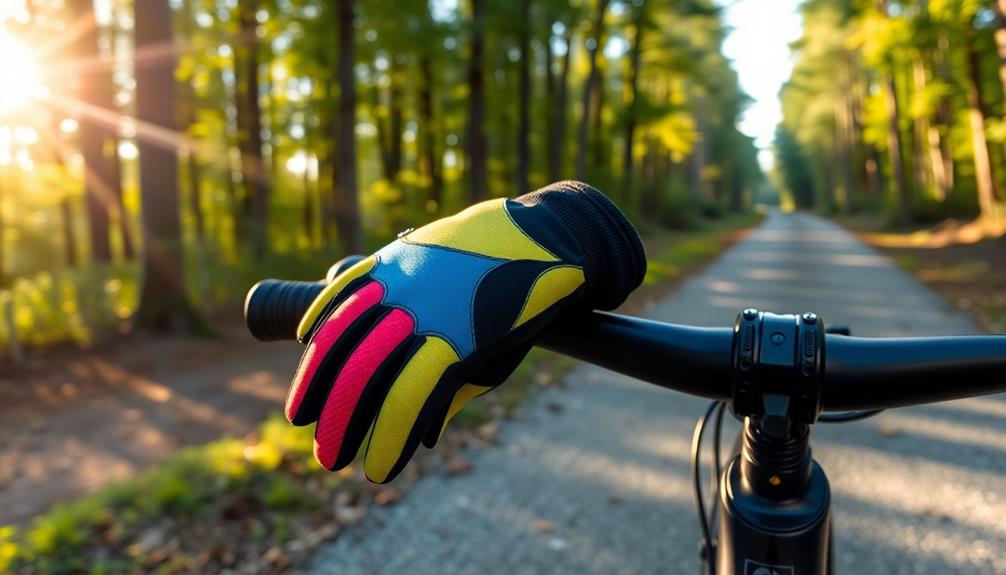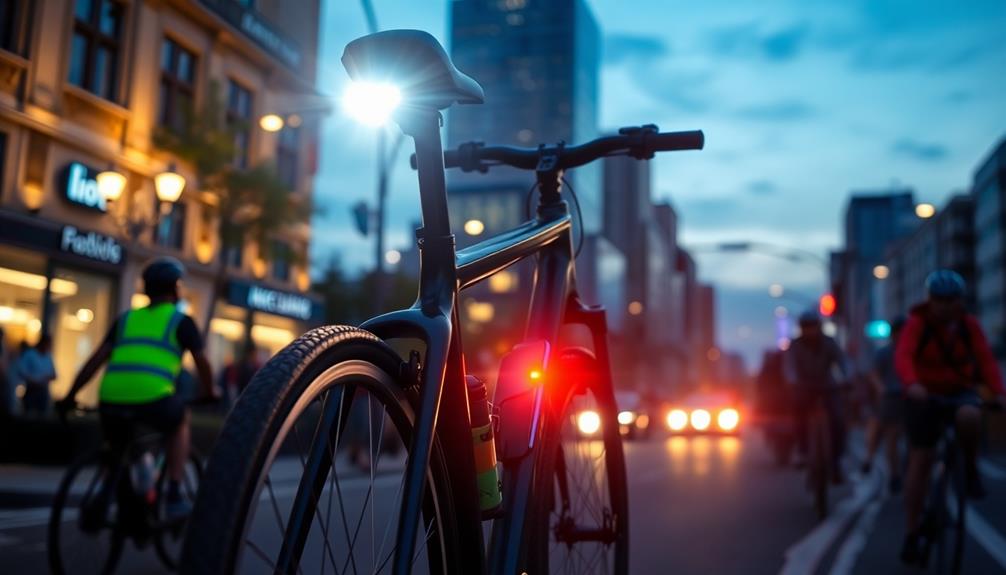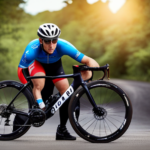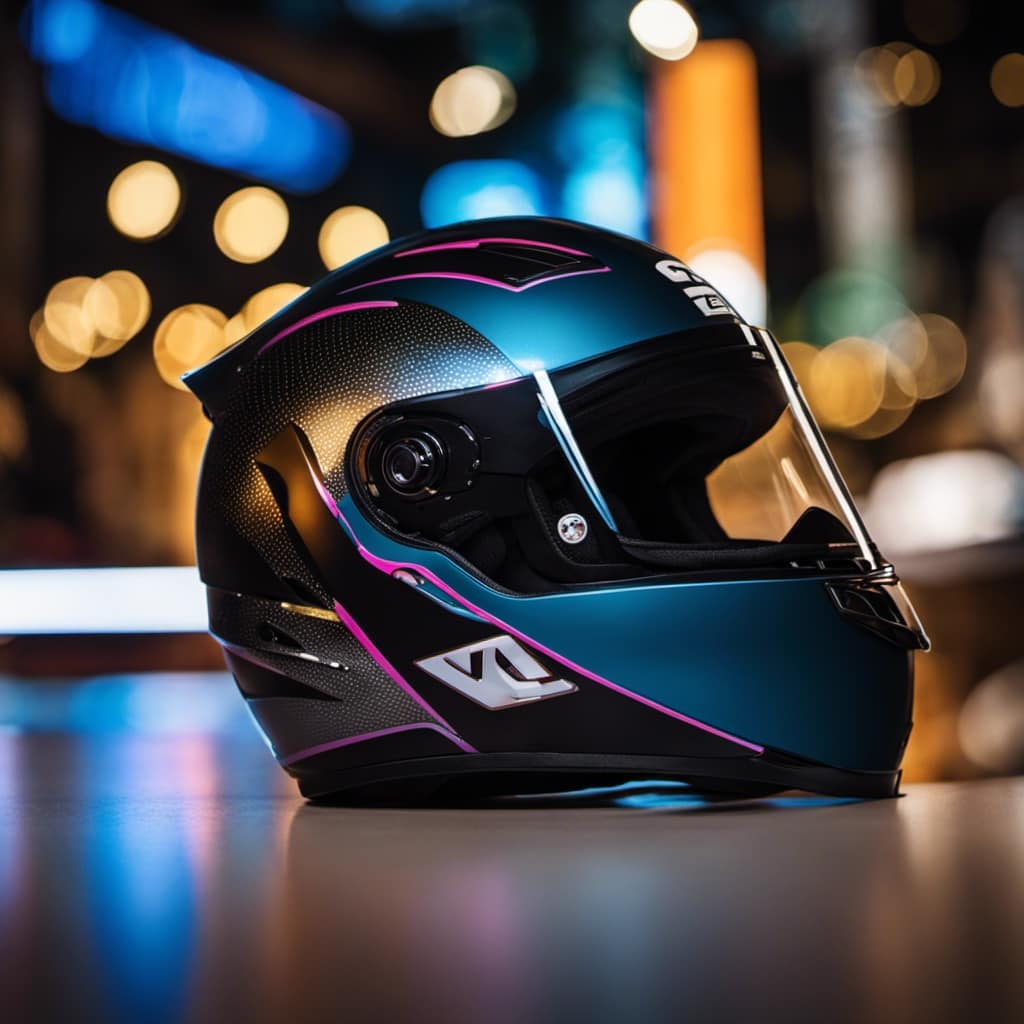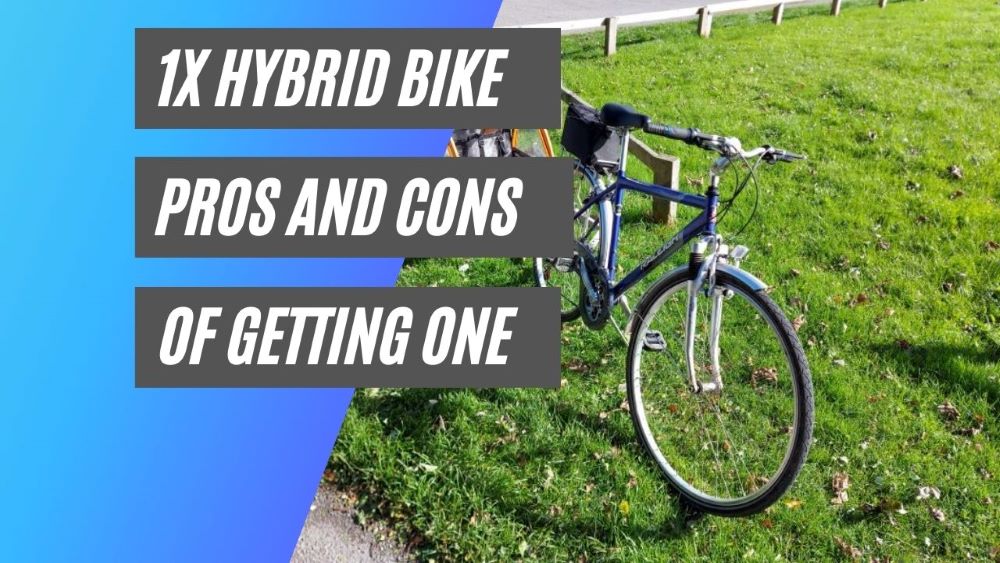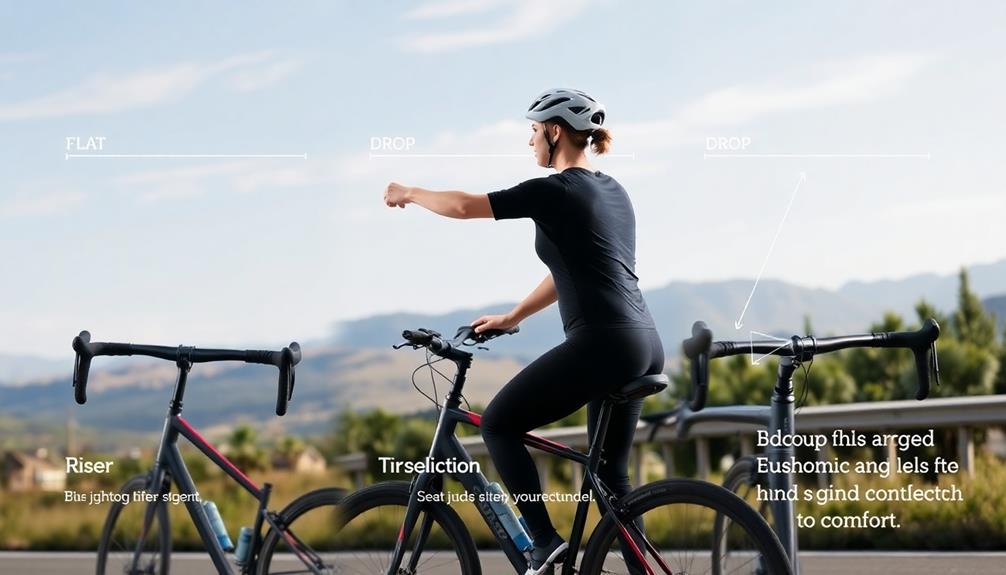You absolutely need cycling gloves for hybrid biking. They enhance your grip on the handlebars, which is essential for controlling your bike on varied terrains. Gloves also absorb shocks and reduce hand fatigue, making long rides more comfortable. Plus, they protect your hands from abrasions and blisters, ensuring you can ride without distractions. Whether you choose full-finger or fingerless gloves depends on the weather, but either way, you'll benefit from improved performance and safety. If you're curious about the best options and maintenance tips, there's plenty more to explore on how to optimize your cycling experience.
Key Takeaways
- Cycling gloves enhance grip on handlebars, crucial for maintaining control on varied terrains while hybrid biking.
- Padded gloves absorb shocks and vibrations, reducing hand fatigue during long rides.
- Wearing gloves protects against abrasions, blisters, and temperature extremes, improving overall comfort.
- Gloves are essential in wet or cold conditions, providing extra cushioning and warmth for hands.
- Personal preference may allow for going gloveless on short, smooth rides, but gloves generally enhance performance and safety.
Importance of Cycling Gloves
When you hit the trails on your hybrid bike, wearing cycling gloves is essential for a better riding experience. These gloves enhance your grip on the handlebars, giving you better control and safety, especially on varied terrains.
They're particularly beneficial when riding in urban environments, as they allow for quick alterations between riding styles, ensuring you maintain a firm hold even in traffic. You'll appreciate how they absorb shocks and vibrations, greatly reducing hand fatigue during long rides. Without that extra padding, your hands can feel sore and tired before you know it.
Cycling gloves also help regulate your hand temperature. They wick away moisture in warmer conditions, preventing sweaty palms that can compromise your grip. In cooler weather, they provide insulation, ensuring your hands stay warm without sacrificing performance.
Plus, gloves offer vital protection from abrasions, blisters, and environmental elements as you navigate mixed surfaces, which is particularly important given the versatility of hybrid bikes.
In short, wearing gloves not only enhances your comfort but also boosts your overall biking performance. With the right pair, you gain extra protection that allows you to focus on the ride rather than on discomfort.
Types of Cycling Gloves
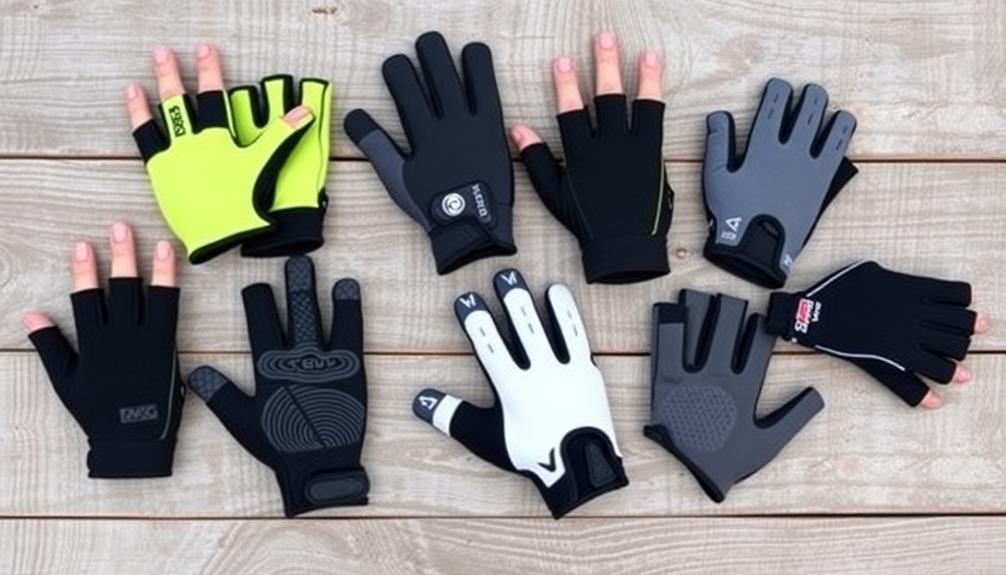
Cycling gloves come in a variety of styles, each tailored to meet specific riding conditions and preferences. Understanding the different types of cycling gloves can help you choose the right pair for your hybrid biking adventures.
| Type of Gloves | Key Features | Best For |
|---|---|---|
| Full Finger Gloves | Provides warmth and full hand protection | Cold weather rides |
| Fingerless Gloves | Offers ventilation and better grip | Warm weather rides |
| Gel-Padded Gloves | Cushioned for comfort, absorbs shocks | Long-distance rides |
| Waterproof Gloves | Keeps hands dry, maintains grip | Wet or rainy conditions |
Full finger gloves are perfect for colder days, ensuring your hands stay warm. On the other hand, fingerless gloves offer excellent ventilation, making them suitable for warmer climates. If you're planning a long ride, consider gel-padded gloves to enhance comfort. Finally, waterproof gloves are essential when the forecast looks gloomy, allowing you to maintain control of your bike in wet conditions. By selecting the right type of cycling gloves, you can enhance your overall biking experience.
Benefits for Hybrid Biking
With the right cycling gloves, you can greatly enhance your hybrid biking experience. These gloves provide an improved grip on the bars, which is essential when you're riding on varied terrains, similar to how high refresh rates can elevate gaming experiences in projectors top projectors for gaming.
Whether you're maneuvering through urban streets or tackling rugged trails, better control and handling can make a significant difference.
Cycling gloves also feature padding that absorbs shocks from bumps and vibrations, ensuring a more comfortable ride during those longer journeys. When you wear gloves, you're protecting your hands from abrasions and blisters that can arise from rough surfaces. This added protection is invaluable, especially when you're exploring mixed environments.
Temperature regulation is another benefit; gloves wick away sweat in warmer conditions while insulating your hands in cooler weather, making them suitable for year-round hybrid biking.
Plus, their ergonomic design minimizes pressure points, which enhances overall comfort and allows you to ride longer without discomfort.
In essence, wearing cycling gloves is a smart choice for any hybrid biker looking to boost comfort, safety, and performance during their rides.
Personal Experiences With Gloves
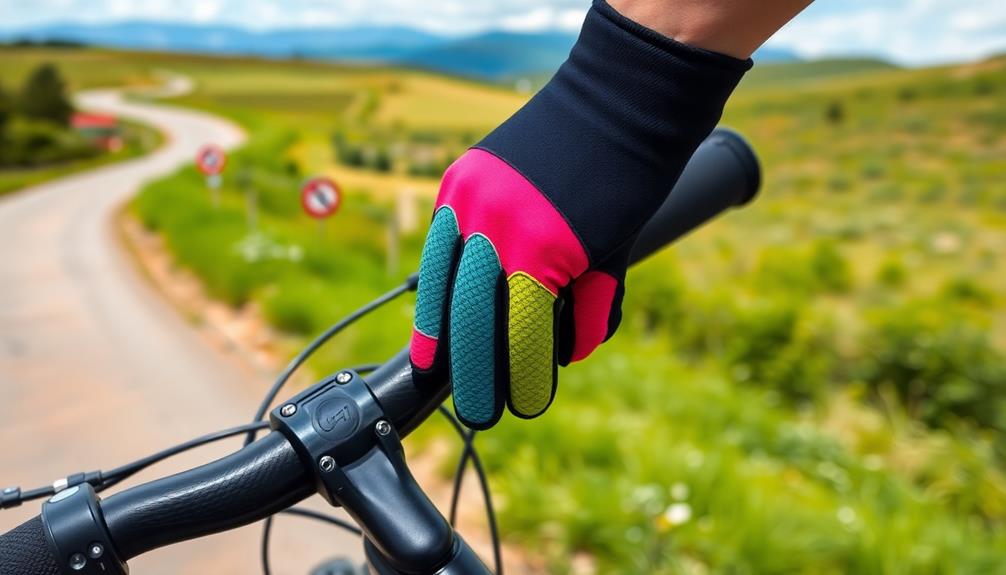
When you're out on a long ride, wearing gloves can make a noticeable difference in your comfort.
They provide essential grip and cushioning, which can be especially beneficial during extended periods of cycling, similar to how regular maintenance enhances the efficiency of heat pumps.
You might find that they help prevent injuries like blisters or hand fatigue, allowing you to enjoy the journey more.
Have you experienced any benefits from using gloves during your rides?
Comfort During Long Rides
A good pair of cycling gloves can make all the difference during long hybrid biking rides. You might not realize how much comfort they bring until you experience the difference firsthand. The added padding at the palms notably reduces hand fatigue, allowing you to focus on enjoying the ride.
| Benefits of Cycling Gloves | Your Experience |
|---|---|
| Extra padding for comfort | No more sore palms |
| Shock absorption | Less hand fatigue |
| Improved grip | Better control on descents |
Wearing gloves also helps absorb shocks and vibrations, especially on varied terrains. You'll likely notice that your hands feel less strained after a long outing. Plus, gloves prevent blisters and calluses, enhancing your overall experience.
In cooler weather, they keep your hands warm while maintaining the dexterity needed for shifting gears and braking. This means you can ride longer without discomfort. Whether you're tackling hills or cruising through flat paths, the comfort gloves provide transforms your ride into an enjoyable adventure, making every mile feel a bit easier. So, for your next long ride, don't underestimate the power of a good pair of cycling gloves!
Injury Prevention Experiences
Many cyclists find that wearing gloves is a game-changer for injury prevention during rides. Personal experiences show that padded gloves absorb shocks from bumps and vibrations, making them invaluable for hybrid biking on mixed terrain. When you hit a rough patch, those extra layers can really save your hands from discomfort and potential injuries.
Additionally, engaging in mindfulness while cycling—such as focusing on your breathing and the sensations of your ride—can enhance your overall experience, similar to how spiritual practices improve well-being.
Many riders report that gloves also enhance grip on handlebars. This is especially vital during longer rides when hand fatigue can lead to a loss of control. By preventing blisters and calluses, gloves contribute greatly to a more enjoyable cycling experience. You'll appreciate how much easier it's to maintain a solid grip without the worry of painful friction.
In colder weather, opting for full-finger gloves becomes even more important. They not only keep your hands warm but also shield you from frostbite, adding an essential layer of safety.
Ultimately, investing in a good pair of gloves boils down to personal preference, but the benefits for injury prevention are hard to ignore. Whether you're a seasoned rider or just starting out, wearing gloves can make a noticeable difference in your cycling experience.
When to Wear Cycling Gloves
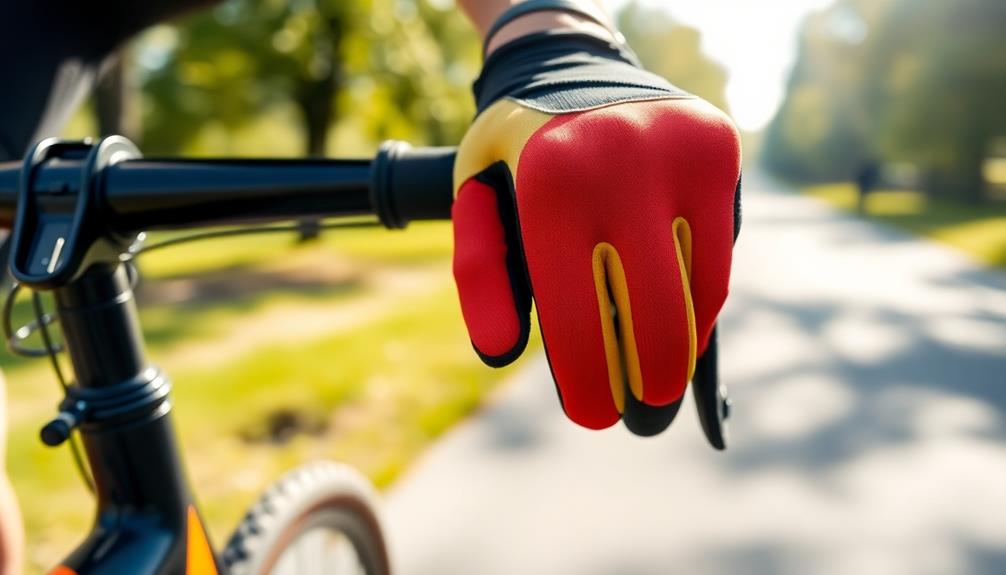
Wearing cycling gloves can greatly enhance your hybrid biking experience, especially in specific conditions. If you often ride in wet or sweaty weather, you'll definitely need gloves to maintain grip and control. These conditions can compromise your handling, making gloves a smart addition to your gear.
Additionally, gloves can provide extra cushioning and protection for your hands, which is especially beneficial during longer rides or when traversing rough terrains, as they can help mitigate the impact of bumps and vibrations on your hands and arms. For more insights on enhancing your riding experience, consider the benefits of balance bikes and scooters.
When temperatures drop below 55°F, you should consider wearing gloves to keep your hands warm and reduce fatigue on cooler rides. Long rides, especially on gravel or mixed terrain, also benefit from the added protection gloves provide against abrasions and impact.
If you have allergies, wearing gloves can help prevent direct contact with allergens like pollen while you cycle. In urban environments, where sudden stops or falls can happen, gloves are essential for protecting your hands and enhancing safety during your commutes or recreational biking.
Ultimately, knowing when to wear gloves can make all the difference in your comfort and performance on the bike. So, next time you head out, consider the conditions and decide if you need gloves for a safer, more enjoyable ride.
When to Go Gloveless
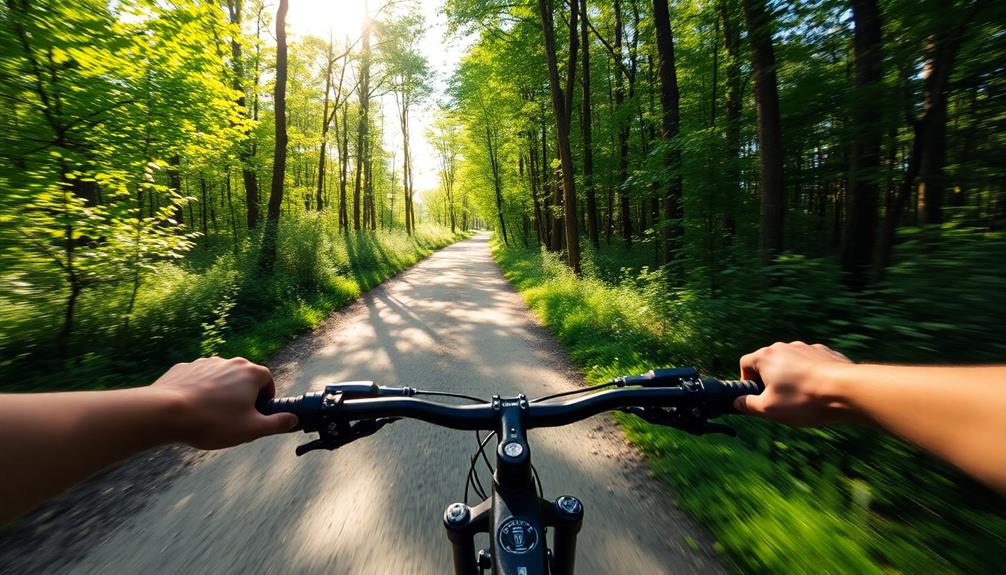
When you're hitting the road for a short, smooth ride, you might find that gloves just aren't necessary. If the weather's nice and your commute lasts under 30 minutes, going gloveless could be a comfortable choice.
Additionally, some cyclists may prefer the feeling of the handlebars, similar to how dogs enjoy the crunch of apples for dental health; it's all about personal preference.
safe fruits for dogs also provide a rejuvenating snack for your furry friend after a ride. Personal preference also plays a role; some cyclists enjoy the direct feel of handlebars without gloves.
Short Rides Considerations
For short rides, especially those under 10 miles on smooth terrain, you might find that gloves aren't necessary. Many cyclists prefer to ride gloveless during these brief excursions, as the risks of falls and hand fatigue are lower.
Additionally, if you're considering the right gear for your ride, it's worth noting that the cost of electric bikes can influence your choice of accessories. Here are some considerations to keep in mind:
- Enhanced breathability: Riding without gloves can keep your hands cooler in warm weather.
- Better tactile feedback: You'll have a more direct feel for braking and gear shifting.
- Reduced risk of injury: Casual rides on hybrid bikes usually come with less aggressive terrain.
- Personal preference: Some cyclists enjoy the freedom of riding without gloves, while others still opt for them.
- Comfort during short durations: If your ride is brief and conditions are dry, going gloveless might be more comfortable.
Ultimately, whether you choose to wear gloves or not depends on your comfort level and riding style.
If you prefer that direct connection with your bike, riding gloveless for short distances can be a great choice. Just listen to your body and adapt as needed.
Weather Impact on Choice
Weather plays a significant role in your decision to wear gloves while cycling, especially on short rides. When temperatures rise above 70°F, you might find it more comfortable to ride without gloves. The heat can lead to sweaty hands, which decreases your grip and overall control.
In dry, clear conditions, you face a lower risk of hand abrasions, making it perfectly acceptable to ditch the gloves for those brief jaunts. Additionally, for outdoor enthusiasts, having the right gear, such as portable camping toilets, can enhance your overall experience.
If you're cruising on smooth terrains, such as paved paths, going gloveless enhances your tactile feedback, allowing you to feel the handlebars better. For rides lasting under 30 minutes, many cyclists choose to ride without gloves, feeling the short duration doesn't warrant the added protection.
Plus, in hot and humid conditions, gloves can trap moisture and heat, leading to discomfort. Just keep in mind that riding without gloves can result in tan lines on your hands, which some might want to avoid.
Ultimately, for short, casual rides, your comfort and weather conditions should dictate your glove choices. Enjoy the freedom of feeling the wind on your skin!
Choosing the Right Gloves
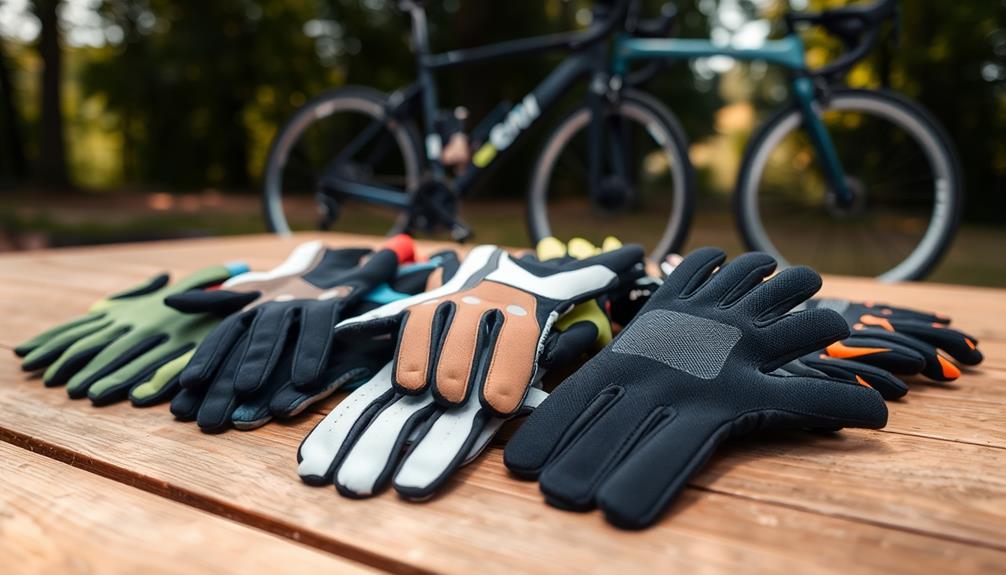
Finding the right gloves for hybrid biking is essential for comfort and performance on your rides. With so many options out there, you'll want to focus on a few key features to guarantee you make the best choice.
Effective preparation maximizes consultation outcomes when selecting the right gear. Look for breathable and moisture-wicking materials to keep your hands dry. Choose gloves with padded palms to absorb shocks from rough terrain.
Pay attention to the fit and size; a snug yet comfortable feel enhances grip. Consider half-finger gloves for warmer climates, and full-finger options for cooler weather. Reflective elements can boost your visibility during low-light rides.
Maintenance and Care Tips
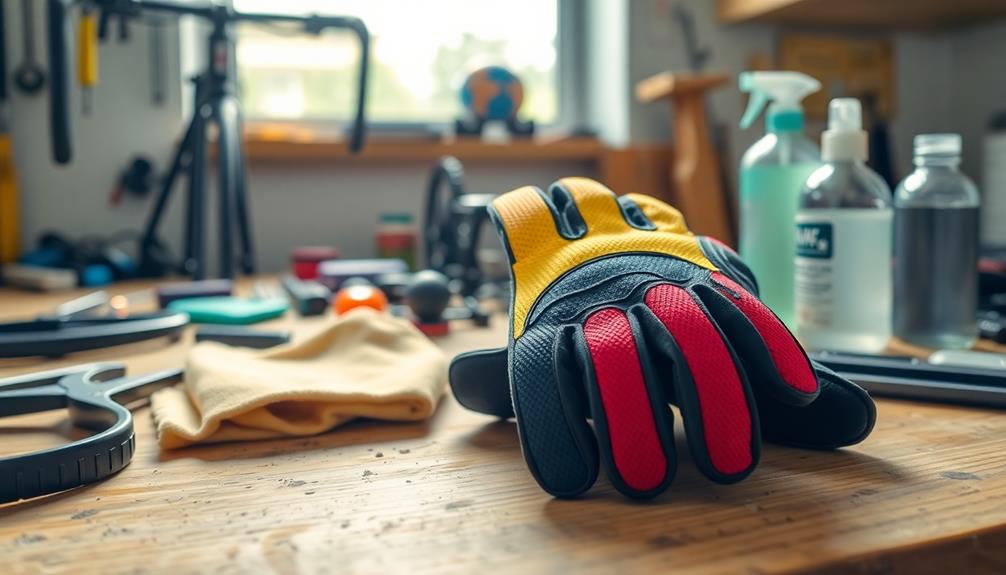
Taking care of your cycling gloves is just as important as choosing the right pair. Regular maintenance guarantees your gloves remain comfortable and protective. Start by inspecting them for any wear and tear, focusing on frayed seams or worn padding. If you notice any damage, it might be time to replace them.
Additionally, incorporating yoga for back pain can help alleviate discomfort that may arise from long rides, making your cycling experience more enjoyable.
When it comes to cleaning, always follow the manufacturer's instructions. Generally, you should wash your gloves in cold water with mild detergent to keep them hygienic and extend their lifespan.
After washing, allow them to air dry completely away from direct sunlight or heat sources, as these can degrade the materials and elasticity.
For leather gloves, consider applying a leather conditioner or protective spray. This helps maintain flexibility and shields against moisture and dirt accumulation.
Frequently Asked Questions
Are Cycling Gloves Necessary?
Cycling gloves aren't strictly necessary, but they enhance your comfort and grip. They absorb shocks, reduce hand fatigue, and protect against abrasions. If you ride often, you might appreciate the added benefits they provide.
Should You Cycle With Gloves or Without?
Imagine gripping the handlebars, feeling the wind rush past. You'll find cycling with gloves enhances your grip, cushions your ride, and protects against blisters. So, consider whether comfort and safety matter for your journey.
Why Do Pro Mountain Bikers Not Wear Gloves?
Pro mountain bikers often skip gloves to enhance tactile feedback and improve bike control. They enjoy better ventilation, feel more connected to the bike, and prioritize personal comfort, which all contribute to their riding experience.
Should I Get Cycling Gloves With or Without Fingers?
You might think cycling gloves are just a fashion statement, but they actually enhance your ride. If you prefer breathability, go fingerless; for more protection and comfort, full-finger gloves are your best bet. Choose wisely!
Conclusion
In the end, cycling gloves can be a game-changer for your hybrid biking experience. They offer comfort, protection, and improved grip, making every ride smoother than a well-paved road. Whether you're tackling city streets or scenic trails, having the right gloves can make all the difference. So, don't hesitate to gear up—your hands will thank you later! After all, it's not just about the journey; it's about enjoying every pedal stroke along the way.
